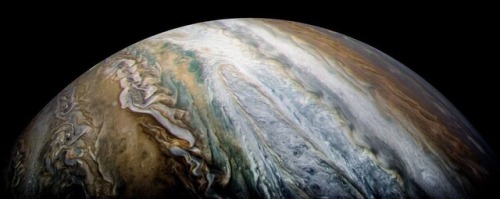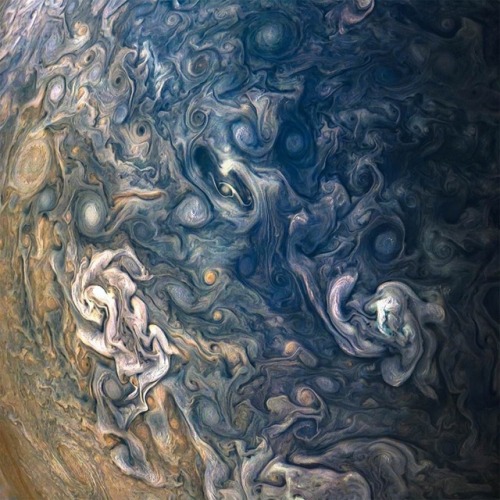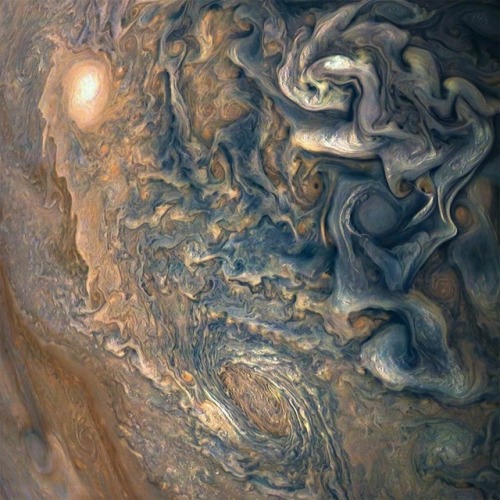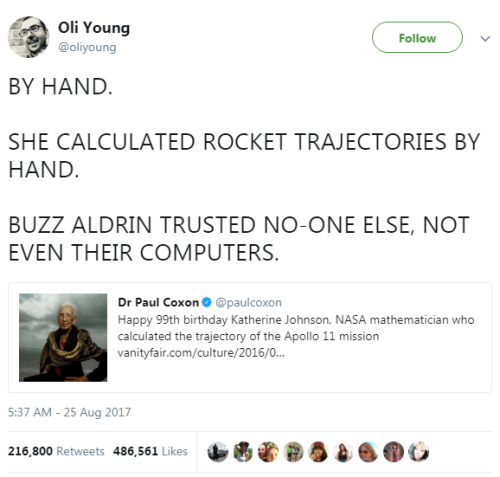Planet Earth, April 16, 1972, As Seen From The Apollo 16 Spacecraft As It Journeyed Toward The Moon.










Planet Earth, April 16, 1972, as seen from the Apollo 16 spacecraft as it journeyed toward the Moon. (NASA)
More Posts from Starlost and Others

What is a Rogue Planet?
A rogue planet (also termed a free-floating (FFP), interstellar, nomad, orphan, sunless, starless, unbound or wandering planet) is an interstellar object of planetary-mass, therefore smaller than fusors (stars and brown dwarfs) and without a host planetary system. Such objects have been ejected from the planetary system in which they formed or have never been gravitationally bound to any star or brown dwarf. The Milky Way alone may have billions to trillions of rogue planets, a range the upcoming Nancy Grace Roman Space Telescope will likely be able to narrow down.
Source
image Credit: ESO/L. Calçada/P. Delorme/R. Saito/VVV Consortium






it’s always a good day to get drunk and cry about the voyager records


The horizons of Venus, Earth, Moon, Mars, and Titan.
Source: http://i.imgur.com/A1gIYXdl.jpg





10 Things You Didn’t Know About Space
There is still so little known about outer space by modern science, but of that little we do know, there are some extraordinarily amazing things. This is a list of the top 10 cool facts about Space.
10. Lightweight
Fact: If you put Saturn in water it would float
The density of Saturn is so low that if you were to put it in a giant glass of water it would float. The actual density of Saturn is 0.687 g/cm3 while the density of water is 0.998 g/cm3. At the equator Saturn has a radius of 60,268 ± 4 km – which means you would need an extremely large glass of water to test this out.
9. Constantly Moving
Fact: We are moving through space at the rate of 530km a second
Our Galaxy – the Milky Way is spinning at a rate of 225 kilometers per second. In addition, the galaxy is travelling through space at the rate of 305 kilometers per second. This means that we are traveling at a total speed of 530 kilometers (330 miles) per second. That means that in one minute you are about 19 thousand kilometers away from where you were. Scientists do not all agree on the speed with which the Milky Way is travelling – estimates range from 130 – 1,000 km/s. It should be said that Einstein’s theory of relativity, the velocity of any object through space is not meaningful.
8. Farewell old friend!
Fact: The moon is drifting away from Earth
Every year the moon moves about 3.8cm further away from the Earth. This is caused by tidal effects. Consequently, the earth is slowing in rotation by about 0.002 seconds per day per century. Scientists do not know how the moon was created, but the generally accepted theory suggests that a large Mars sized object hit the earth causing the Moon to splinter off.
7. Ancient Light
Fact: The light hitting the earth right now is 30 thousand years old
The energy in the sunlight we see today started out in the core of the Sun 30,000 years ago – it spent most of this time passing through the dense atoms that make the sun and just 8 minutes to reach us once it had left the Sun! The temperature at the core of the sun is 13,600,000 kelvins. All of the energy produced by fusion in the core must travel through many successive layers to the solar photosphere before it escapes into space as sunlight or kinetic energy of particles.
6. Solar Diet
Fact: The Sun loses up to a billion kilograms a second due to solar winds
Solar winds are charged particles that are ejected from the upper surface of the sun due to the high temperature of the corona and the high kinetic energy particles gain through a process that is not well understood at this time. Also, did you know that 1 pinhead of the sun’s energy is enough to kill a person at a distance of 160 kilometers? [Sourced from Planet Science]
5. The Big Dipper is not a constellation
Fact: The Big Dipper is not a constellation, it is an asterism
Many people consider the big dipper to be a constellation but, in fact, it is an asterism. An asterism is a pattern of stars in the sky which is not one of the official 88 constellations; they are also composed of stars which are not physically related to each other and can be vast distances apart. An asterism can be composed of stars from one or more constellations – in the case of the Big Dipper, it is composed entirely of the seven brightest stars in the Ursa Major (Great Bear) constellation.
4. George’s Star
Fact: Uranus was originally called George’s Star
When Sir William Herschel discovered Uranus in 1781, he was given the honor of naming it. He chose to name it Georgium Sidus (George’s Star) after his new patron, King George III (Mad King George). This is what he said:
In the fabulous ages of ancient times the appellations of Mercury, Venus, Mars, Jupiter and Saturn were given to the Planets, as being the names of their principal heroes and divinities. In the present more philosophical era it would hardly be allowable to have recourse to the same method and call it Juno, Pallas, Apollo or Minerva, for a name to our new heavenly body. The first consideration of any particular event, or remarkable incident, seems to be its chronology: if in any future age it should be asked, when this last-found Planet was discovered? It would be a very satisfactory answer to say, ‘In the reign of King George the Third.’
Uranus was also the first planet to be discovered with the use of a telescope.
3. Extra Moons
Fact: Earth has at least 4 moons
Okay – that is not actually true – but it is very close. In 1986, Duncan Waldron discovered a asteroid (5km across) that is in an elliptic orbit around the sun with a period of revolution virtually identical to that of Earth. For this reason the planetoid and earth appear to be following each other. The periodic planetoid is named Cruithne (pronounced krin-yə) after an ancient group of Scottish people (also known as the Picts). Because of its unusual relationship with Earth, it is sometimes referred to as Earth’s second moon. Cruithne, is fainter than Pluto and would require at least a 12.5 inch reflecting telescope to attempt to be seen. Since its discovery, at least three other similar asteroids have been discovered. These types of objects are also found in similar relationships to other planets in our Solar System. In the image above (courtesy of Paul Wiegert), the earth is the blue circle with a cross in it, and Cruithne’s orbit is shown in yellow.
2. Sunspot Music
Fact: Sunspot activity may be the primary reason for the beautiful sound of Stradivarius violins
Antonio Stradivari is considered to be the greatest violin maker ever. He lived in Italy in the 17th and 18th centuries. Scientists have been unable to work out what it is about his violins that makes them so incredible, but they do know that the timber used to make them is a very important contributing factor. From the 1500s to 1800s, the earth underwent a little ice age mostly due to increased volcanic activity and decreased solar activity (this is called the Maunder Minimum). As a result of this cooling, the types of trees that Stradivari used for his violins were particularly hard (due to slow growth). Hard timber is especially good when making violins. It is very probable that had Stradivari lived in a different age, his violins would not be prized as they are today. This picture above is made of three overlapping photos. It shows the rings in the spruce tree used to make the most famous Stradivarius violin, the “Messiah.” The first row of numbers gives the width of each ring in millimeters (one mm is about the thickness of a fingernail). The bottom row gives the years in which each ring grew.
1. Cold Welding
Fact: If two pieces of metal touch in space, they become permanently stuck together
This may sound unbelievable, but it is true. Two pieces of metal without any coating on them will form in to one piece in the vacuum of space. This doesn’t happen on earth because the atmosphere puts a layer of oxidized material between the surfaces. This might seem like it would be a big problem on the space station but as most tools used there have come from earth, they are already coated with material. In fact, the only evidence of this seen so far has been in experiments designed to provoke the reaction. This process is called cold welding. For those who still don’t believe it, here is the Wikipedia article on Cold Welding.

Hubble’s Blue Bubble by NASA Goddard Photo and Video


She should have a statue. Not those confederate MFs.
![Squidolus [Day:1323 Hour:12]](https://64.media.tumblr.com/642d11218acb2fdc6d9f85cd9d68274e/740f0e36da891d33-b4/s500x750/a5fb82ea794308bf702bfbec68a5f367866ba754.png)
Squidolus [Day:1323 Hour:12]
-
 idog-one liked this · 2 years ago
idog-one liked this · 2 years ago -
 oflgtfol reblogged this · 2 years ago
oflgtfol reblogged this · 2 years ago -
 oflgtfol liked this · 2 years ago
oflgtfol liked this · 2 years ago -
 ameliorar liked this · 5 years ago
ameliorar liked this · 5 years ago -
 jasmiine-ann liked this · 5 years ago
jasmiine-ann liked this · 5 years ago -
 kyhuk reblogged this · 5 years ago
kyhuk reblogged this · 5 years ago -
 ev0lve liked this · 6 years ago
ev0lve liked this · 6 years ago -
 polvos-de-estrella-blog liked this · 6 years ago
polvos-de-estrella-blog liked this · 6 years ago -
 spiceycat liked this · 6 years ago
spiceycat liked this · 6 years ago -
 slowfragility liked this · 6 years ago
slowfragility liked this · 6 years ago -
 neverkind reblogged this · 6 years ago
neverkind reblogged this · 6 years ago -
 chaoticmentality liked this · 7 years ago
chaoticmentality liked this · 7 years ago -
 rojorojo reblogged this · 7 years ago
rojorojo reblogged this · 7 years ago -
 piercemyskin liked this · 7 years ago
piercemyskin liked this · 7 years ago -
 cielaestrada reblogged this · 7 years ago
cielaestrada reblogged this · 7 years ago -
 ardeius reblogged this · 8 years ago
ardeius reblogged this · 8 years ago -
 streamsofsound reblogged this · 8 years ago
streamsofsound reblogged this · 8 years ago -
 astriferously reblogged this · 8 years ago
astriferously reblogged this · 8 years ago -
 starshipgrove reblogged this · 8 years ago
starshipgrove reblogged this · 8 years ago -
 deeepday liked this · 8 years ago
deeepday liked this · 8 years ago -
 bitch-po-zhisni liked this · 8 years ago
bitch-po-zhisni liked this · 8 years ago -
 hurtsettefromgallifrey reblogged this · 8 years ago
hurtsettefromgallifrey reblogged this · 8 years ago -
 sokolyy liked this · 8 years ago
sokolyy liked this · 8 years ago -
 whumpstiel liked this · 8 years ago
whumpstiel liked this · 8 years ago -
 ardentempest reblogged this · 8 years ago
ardentempest reblogged this · 8 years ago -
 sulalesh liked this · 8 years ago
sulalesh liked this · 8 years ago -
 ara-cat-blog1 liked this · 8 years ago
ara-cat-blog1 liked this · 8 years ago -
 exepted-blog liked this · 8 years ago
exepted-blog liked this · 8 years ago -
 tamyreszzz reblogged this · 8 years ago
tamyreszzz reblogged this · 8 years ago -
 reciproclamar reblogged this · 8 years ago
reciproclamar reblogged this · 8 years ago -
 your-flower-things reblogged this · 8 years ago
your-flower-things reblogged this · 8 years ago -
 arrretada reblogged this · 8 years ago
arrretada reblogged this · 8 years ago -
 embriagadopelavida liked this · 8 years ago
embriagadopelavida liked this · 8 years ago -
 praiadesol-blog1 liked this · 8 years ago
praiadesol-blog1 liked this · 8 years ago -
 imyasminzegatta liked this · 8 years ago
imyasminzegatta liked this · 8 years ago -
 aurafl0rida reblogged this · 8 years ago
aurafl0rida reblogged this · 8 years ago -
 aurafl0rida liked this · 8 years ago
aurafl0rida liked this · 8 years ago -
 sem-rum0 liked this · 8 years ago
sem-rum0 liked this · 8 years ago -
 spisyware liked this · 8 years ago
spisyware liked this · 8 years ago -
 uppdate reblogged this · 8 years ago
uppdate reblogged this · 8 years ago

andrei, he/him, 21, made this at 14 when i was a space nerd but i never fully grew out of that phase so,,,,..,hubble telescope + alien life + exoplanet + sci fi nerd
245 posts